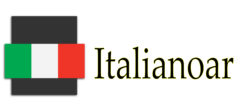Local Transportation Offices (RTOs) are integral to maintaining obtain and performance in the region of path transport. Nevertheless, the full potential of RTO methods often remains untapped. In this information, we explore the significance of RTO sources and delve into how their optimization can result in increased operations, improved services, and a more structured road transfer ecosystem.
Modernizing Infrastructure and Methods:
To discover the potential of RTO resources, it is a must to buy modern infrastructure and systems. By adopting sophisticated systems, RTOs may automate processes, reduce paperwork, and lower administrative burdens. Implementation of user-friendly online platforms for services such as for example car registration, certificate renewals, and fee payments can considerably improve comfort for both RTO personnel and road users.
Empowering RTO Personnel:
RTO assets encompass not merely technological breakthroughs but also the skills and understanding of the workers functioning within these offices. By giving comprehensive instruction programs, workshops, and skilled progress possibilities, RTOs can inspire their staff members to supply exemplary services. Well-trained personnel are designed for complex queries, offer correct guidance, and assure successful managing of paperwork, fostering a culture of quality within RTOs.

Leveraging Knowledge for Insights and Improvements:
RTOs obtain substantial levels of knowledge linked to vehicles, licenses, street situations, and more. By harnessing the energy of knowledge analytics, RTOs may get valuable ideas into traffic patterns, license compliance prices, and car performance. These ideas may get evidence-based decision-making, leading to the implementation of targeted street security steps, enhanced source allocation, and improved over all efficiency of street transportation systems.
Improving Customer Experience:
RTO assets must certanly be focused on providing outstanding client activities to path users. Employing user-centric strategies, such as for instance on the web visit programs, shorter waiting instances, and apparent transmission routes, may greatly increase client satisfaction. Additionally, proactive transmission regarding any improvements in regulations, paperwork RTO training resources, or support techniques can help customers navigate the RTO processes smoothly and efficiently.
Strengthening Interagency Effort:
To understand the entire possible of RTO resources, effort with other agencies and stakeholders is vital. Easy integration with police agencies, traffic administration authorities, and car inspection centers may result in increased control, improved enforcement of regulations, and effective sharing of information. That venture can result in better path protection actions, paid down traffic congestion, and a far more holistic approach to controlling the transportation ecosystem.
Conclusion:
Optimizing RTO sources is instrumental in operating quality and performance within the trail transfer sector. By modernizing infrastructure, empowering workers, leveraging information insights, enhancing client knowledge, and fostering interagency relationship, RTOs can open their full potential. This may not merely result in streamlined techniques and increased solutions but also contribute to safer roads, improved user satisfaction, and an even more sustainable and efficient road transport environment for all.
